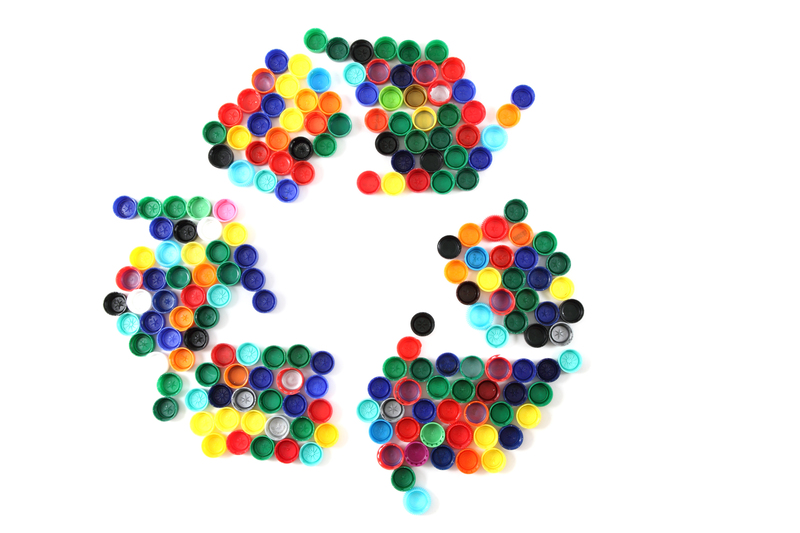From Ancient Dumps to Recycling Centers: Waste Management Through Time
Waste management has always played a crucial role in the sustainability and health of human societies. From rudimentary ancient dumps to the sophisticated recycling centers we see today, the journey of waste management reflects the evolution of civilization itself. This comprehensive guide explores how societies have dealt with waste over time, explores the innovations that transformed waste disposal, and highlights the importance of sustainable waste practices in our modern world.

The Earliest Days: Primitive Waste Disposal
How Early Humans Managed Waste
In prehistoric times, humans were predominantly hunter-gatherers who produced minimal waste, mostly biodegradable remnants like bones and plant material. However, with the rise of settlements, the accumulation and management of waste became a critical concern.
- Archaeological evidence of ancient dumps--known as middens--has been found around early human settlements, dating back thousands of years.
- These middens contained animal bones, broken tools, pottery fragments, and other household refuse.
- Early communities relied mainly on open dumping at the outskirts of their habitats, which led to increasing sanitation issues as populations grew.
Ancient Civilizations and the Need for Organized Waste Management
With the development of early city-states and civilizations, such as Ancient Mesopotamia, Egypt, and the Indus Valley, came densely populated settlements and, inevitably, more waste. These societies began to recognize the need for designated waste management systems.
- The city of Ur in Mesopotamia, over 5,000 years ago, had some of the oldest recorded waste pits.
- Archaeologists have also found evidence of household trash disposal and street cleaning in the Harappan civilization (Indus Valley), suggesting advanced understanding of urban cleanliness.
The Greeks, Romans, and Innovative Waste Solutions
Public Sanitation Initiatives
As urban centers flourished in antiquity, the problems of waste grew more pressing, especially in burgeoning cities like Athens and Rome. The Greeks and Romans pioneered some early waste management strategies that laid the groundwork for modern practices.
- The Greeks implemented laws requiring citizens to dump waste at least a mile outside the city walls, alleviating the impact on urban life.
- The Romans constructed the Cloaca Maxima, one of history's first large-scale sewer systems, to divert wastewater and refuse away from populated areas.
- In ancient Rome, garbage collectors known as "scavengers" carted refuse out of the city, demonstrating an early form of organized waste removal.
The Lingering Issues of Open Dumps
Despite these advances, most waste in antiquity still ended up in open dumps, landfills, or rivers, leading to foul odors, water contamination, and frequent outbreaks of disease. These issues prompted many communities to reconsider their approach to waste and sanitation.
Middle Ages: The Rise of Urbanization and Waste Challenges
Neglected Sanitation and Its Consequences
The Middle Ages saw rapid urban growth in Europe, often outpacing the development of waste management infrastructure. Waste was tossed into the streets or ditches, leading to unsanitary conditions notorious for fueling deadly epidemics such as the Black Plague.
-
Medieval cities, like London and Paris, became infamous for their dirty streets and open sewers.
Night soil men would collect human waste and dump it outside the city limits--hardly an adequate solution. - Pigs and other animals often roamed the streets, consuming some waste but adding their own manure to the problem.
- Wells and waterways became contaminated, further exacerbating public health crises.
Laws and Early Efforts to Combat Waste
Some towns attempted to combat these issues by issuing waste disposal ordinances or establishing rudimentary street cleaning. These efforts, while useful, were still insufficient for the growing urban populations.
The Industrial Revolution and Modern Waste Management
Industrialization Brings New Forms of Waste
The Industrial Revolution in the 18th and 19th centuries changed waste management forever. With mass production and rapid population growth, cities faced not just more waste, but new types of refuse, including hazardous industrial byproducts.
- Cities became centers of pollution and environmental degradation, prompting the first government-enforced waste regulations.
- In 1875, the British Public Health Act made it compulsory for households to use bins ("dustbins") for waste, leading to the organization of municipal waste collection.
- Incinerators, or "destructors," emerged in the late 19th century, burning waste to reduce volume, but also introducing new air quality challenges.
The Advent of Landfills and Early Recycling
The landfill became the go-to solution for rubbish disposal in the modern era, destined to receive everything from domestic garbage to industrial waste. Simultaneously, resource scarcity prompted the first systematic efforts toward recycling.
- Paper recycling began in the 19th century as an economic necessity.
- Scrap metal and cloth were collected for reuse, especially during times of war and resource shortages.
- However, the throwaway culture accelerated with the rise of consumerism in the 20th century, overwhelming traditional waste management techniques.
Post-War Era: The Growth of Modern Sanitation and Recycling
Sanitary Landfills and Waste Segregation
The mid-20th century witnessed a revolution in waste disposal methods. Sanitary landfills, which used dirt covers and clay linings to prevent contamination, replaced open dumps in many developed nations. Additionally, household segregation of recyclables began to take root.
- New York City pioneered curbside recycling collection in the 1960s, setting a precedent for many American and European cities.
- Glass, paper, metal, and plastics began to be separated at the source, redirecting valuable materials away from landfills.
- Environmental protection agencies were formed to regulate waste disposal and promote recycling initiatives.
Composting: Harnessing Biodegradable Waste
Composting emerged as an effective way to manage organic waste, such as food scraps and yard trimmings, transforming it into nutrient-rich soil and reducing landfill load.
- Large-scale composting facilities now operate alongside municipal recycling centers.
- Many communities promote backyard composting as a sustainable household practice.
The Dawn of Advanced Recycling and Waste-to-Energy
High-Tech Solutions to Age-Old Problems
Today's municipalities employ state-of-the-art methods to process and repurpose waste. Recycling centers are technologically advanced, using mechanical and chemical processes to recover valuable materials from refuse streams.
- Single-stream recycling simplifies sorting for consumers, making participation easier and more widespread.
- Automated sorting systems, magnet separators, and optical scanners improve efficiency at recycling facilities.
- Innovations in waste-to-energy technology convert non-recyclable garbage into electricity and heat, reducing landfill reliance while generating usable power.
Zero-Waste Initiatives and the Circular Economy
A growing movement toward zero waste and sustainability aims to minimize ecological footprints by designing products and systems that allow continuous reuse and repurposing of materials.
- Circular economy models promote the idea of restoring resources, rather than discarding them.
- Municipalities encourage manufacturers to use recyclable materials and design products for disassembly.
- Community-led initiatives, such as repair cafes and upcycling workshops, empower citizens to rethink waste.

The Global Landscape: Waste Management in the 21st Century
Challenges and Opportunities in Modern Waste Disposal
While urban societies in wealthier nations benefit from advanced waste infrastructure, many developing countries still struggle with open dumping, inadequate funding, and poor enforcement of sanitary standards.
- Urbanization and population growth continue to increase the overall volume of municipal solid waste.
- Plastic pollution has emerged as a global crisis, with single-use plastics overwhelming landfills and oceans.
- Electronic waste (e-waste) presents new hazards, with toxins threatening human health and the environment.
Emerging Trends and the Future of Waste Management
Advanced recycling technologies--such as chemical recycling and biodegradable plastics--are on the rise. Smart waste management systems leverage sensors, AI, and data analytics to optimize collection routes and manage facilities more efficiently.
- Pay-as-you-throw programs incentivize waste reduction by linking fees directly to the amount of trash generated.
- Producer responsibility laws hold manufacturers accountable for the end-of-life disposal of their products.
- International collaborations aim to standardize waste disposal and recycling efforts, recognizing that environmental protection is a shared global responsibility.
Conclusion: Lessons from the History of Waste Management
The transition from ancient dumps to recycling centers tells the story of humanity's ingenuity and capacity for progress. As history reveals, effective waste management is critical not only for public health but for the stewardship of our planet's resources.
In the modern era, the focus has shifted from simple disposal to sustainable waste management--reducing the amount we generate, reclaiming valuable materials, and reimagining a future where waste becomes a resource rather than a problem. As individuals and communities, our participation in recycling programs, composting, and mindful consumption will shape the next stage of the waste management journey.
Together, by learning from our past and embracing advanced waste solutions, we can create cleaner cities, healthier communities, and a more sustainable future for all.